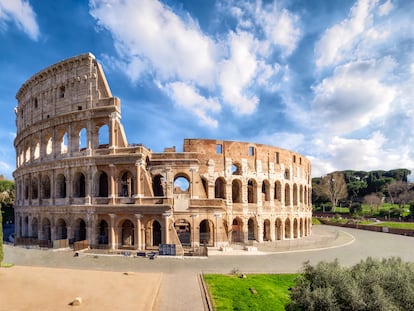The wonders of ancient Rome: A guided tour
In a new book by British historian Jerry Toner, a fictionalized Roman aristocrat takes readers on a ‘grand tour’ of the empire, exploring sites and attractions that early tourists once visited themselves, many now lost to time.

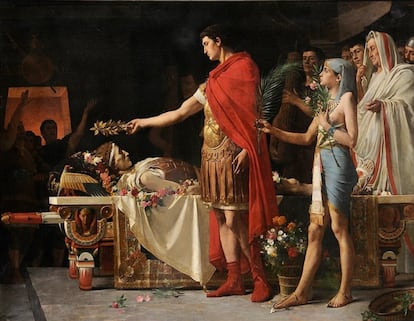
What have the Romans ever given us!? Other than the aqueduct, sanitation, roads, irrigation, wine, bathrooms, public order… and tourism? Jerry Toner, director of studies in classics at Cambridge University’s Churchill College in England, confirms: “Yes, that’s right, that too,” happily joining in on the joke — a reference to a scene from Monty Python’s The Life of Brian, in which a group of Jews resisting Roman occupation argue over the extent of their imperial occupiers’ contributions. In the film, the People’s Front of Judea did not actually include tourism in their reluctant list of Roman contributions, but they very well could have, given that the phenomenon as we now know it originated in ancient Rome. Thousands of years ago, wealthy tourists would travel for pleasure, visiting sites across the empire’s provinces, admiring monuments and enjoying the local cuisine. They saw things we can only dream of seeing today: the Lighthouse of Alexandria and, in the same city, the tomb and corpse of Alexander the Great; as well as other more rumored relics, like the gold and silver cup said to be molded on one of the breasts of Helen of Troy, which, so the rumor goes, was on display at the Temple of Athena Lindia in Lindos, on the island of Rhodes; or another temple, in Sparta, where visitors would flock to see Odysseus’s cloak and the oars of the Argonauts; or in Phocis, Greece, where the rich would travel to see the clay that Prometheus used to mold the first man. Like the tourists of today, Roman travelers suffered pushy tour guides, lousy accommodation, overcrowding, and tacky souvenir shops (where visitors could buy miniature replicas of the Parthenon). They even left graffiti on monuments, as you can see to this day on the pyramids of Egypt, where one ancient inscription left by a Roman tourist reads, “I visited and I did not like anything but the sarcophagus!” To misquote the famous phrase that Tacitus attributed to Calgacus: “They made a desert and called it ‘tourism.’”
“In The Life of Brian, another reason the People’s Front of Judea wants the Romans to leave [Romani ite domum, as the centurion corrects Brian’s grammatically incorrect anti-Roman graffiti] is that Romans were always travelling through the territories they had conquered,” Toner says. “But unlike in the film, it was actually Roman tourists who would leave the graffiti, often with grammatical errors, as a way of making their mark on the ancient monuments, to make it clear that they were under Roman control.”
Toner, well known for his books Infamy: The Crimes of Ancient Rome (Profile Books, 2019) and The Ancient World (Profile Books, 2016), is the author of the recent, original and highly entertaining A Grand Tour of the Roman Empire, book one in The Marcus Sidonius Falx Trilogy. Toner’s latest book focuses on upper-class Roman tourism in the conquered provinces. Strictly speaking, he is the co-author of the book, which he wrote with Marcus Sidonius Falx, a fictionalized, high-born Roman who Toner invented to guide readers through a “grand tour,” avant la letter, of the empire, visiting Greece, Asia Minor, Egypt, and North Africa, and then Carthage, Hispania, Gaul and Britain (where one of Marcus Sidonius’s sons is stationed at Hadrian’s Wall). At the end of each chapter, the historian comments on the tour, providing current perspectives and citing the classical sources on which he has based Marcus’s descriptions.
Marcus Sidonius’s guidebook takes readers back in time, showing them the maps used by Roman travelers and describing the different types of carriages available (he travels in a first class carriage with all the comforts, including a personal toilet), as well as the roads, the inns, and the cultural and scenic landmarks along the way. Our Roman guide packs “only the essentials,” which includes twenty slaves, a messenger, a head chef, a butcher, a barber, and a personal assistant. On his long journey through the empire, Marcus travels by road and ship. “It is hard work being a tourist,” he laments. “The pressing crowds, the scorching summer heat, the hassle from beggars, the lack of baths.” The guide takes Marcus, and the reader, on a visit of the Roman Empire’s greatest monuments, but also to see some lesser-known attractions as well, stopping at the oracle at the oak tree shrine in Dodona, tasting the garum (a fermented fish sauce) in Carthago Nova (modern-day Cartagena, Spain), and watching the dancing girls of Gades in Hispania Baetica (modern-day Andalusia). In Troy, an essential tourist stopover, Marcus’s guide offers to take him to see the lyre of Paris. In Judea, Marcus judges that the ancient fortress of Masada “is a lengthy detour,” and is not worth the trip “unless you are interested in siege warfare.” In Egypt, he notes that Alexander the Great “now lies in a glass coffin so that you can see the preserved corpse clearly, although this is now in a delicate state.”
Be careful, Marcus the tourist warns us, of how you treat the animals in Egypt: “A Roman visitor once kicked a cat so hard that it died. It turned out he had killed a sacred animal and nothing could save him from the baying crowd.”
Indeed, A Grand Tour of the Roman Empire is full of such vivid and believable scenes that it is hard not to picture the imaginary Marcus as a real, flesh and blood person — Toner himself likes to pretend, at times, that his Roman character really exists (that is, until things get too real when Marcus has a run-in with the emperor’s Praetorian Guard toward the end of his trip).
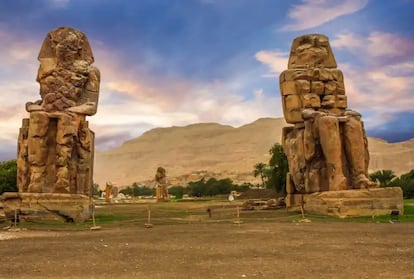
How did the idea for such a creative collaboration, between author and character, emerge? “I was teaching a course on Roman slavery and was looking for a way to help students understand how normal slavery was in the ancient world,” Toner explains. “Obviously, we feel an instinctual horror, but Roman sources give us a completely different point of view. To put those sources in the voice of a fictional character was a way to bring them to life, and to make them more accessible.”
In Toner’s guidebook, Marcus narrates his journey and offers the reader practical information and recommendations, while at the same time, painting a picture of what he was like as a person, and how he thought and acted as a member of the imperial elite. In general, Marcus Sidonius is a pleasant enough traveling companion, but he does have a few unsavory qualities as well. Portraying his negative side was necessary, Toner says, to paint a full picture of the Roman upper class, including their more reprehensible aspects. “In a sense, he’s a metaphor for Rome itself,” says Toner. “We can’t help being impressed by the buildings and cultural achievements, but we must also remember that the Roman world had a much darker side, too.” Marcus is cultured, intelligent and sensitive to the beauty of the monuments and landscapes he visits, but he is also arrogant, thinks of himself as superior, and never questions Rome’s right to subjugate its people, their right to take what they want, or the legitimacy of slavery. Marcus is unmoved when, travelling along the road from Palestine to Egypt, he encounters the terrible spectacle of a group of Christians who have just been crucified. He chats with one of the crucified and — not out of pity, but because his slaves ask him to do so — leaves one slave behind to break the legs of the crucified, so as to shorten their suffering. At another point on his journey, traveling through northern Gaul, Marcus passes by an abandoned baby. “The slave traders or the dogs will soon take care of it,” he says.
For better and worse, to accompany Marcus on his journey is to be immersed in the experience of travelling for pleasure at the height of the Roman Empire. Toner does not specify exact dates, and makes references to different emperors. “Marcus is coy about his age,” Toner writes. “But most of his views reflect those of the High Empire, that time praised by Gibbon as the period in history when the condition of the human race was most happy and prosperous.”
Did the concept of tourism, as we understand it today, really exist in ancient Rome? And if so, how was it different or similar to ours? “During the long centuries of the Roman peace, the Pax Romana of the empire, travel was readily available and affordable,” Toner explains. “This meant that a lot of people travelled for purposes of leisure, in ways comparable to the modern world. What was different was the number of people involved: there wasn’t the kind of mass tourism we have today, and only the wealthy could afford to tour the sights in Greece and Egypt. But large groups often traveled for religious reasons, for example, to attend the Games that took place as part of the great festival in Olympia, where tens of thousands of people would make the arduous journey.”
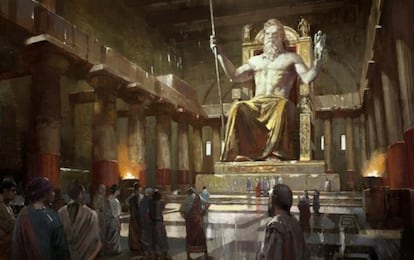
It is tempting to compare Marcus’s trip, and the trips of his peers, to the “Grand Tour” — that 18th- and 19th-century European custom in which wealthy tourists would travel the continent to admire art and other attractions. “For wealthy Romans to tour the sights of the East was one of the perks of the empire — a way of deriving pleasure from the places they had conquered,” Toner says. “They used to go to the same places — the great temples of Greece, the pyramids, the cities of Antioch and Alexandria — in much the same way as European aristocrats would participate in the Grand Tour. The wealthy also sent their young men to study oration at the great schools in Greece, a phenomenon that reflects the same kind of reverence for the classical past that we find in the early modern era.”
What would surprise us most about travel in ancient Roman times? “I think the amount of travelling helped foster the stability of the Roman Empire,” Toner says. “Imperial agents and officials would travel to perform governmental duties and oversee important projects, while soldiers would move to wherever they were stationed. Wealthy landowners would travel to oversee their estates [Marcus owns land as far away from Rome as Tarraco, in modern-day Catalonia], trade flourished, and merchants transported their goods to markets throughout the empire. Animals were imported for the amphitheater. Artists and craftsmen flocked to where there was work, and all manner of street entertainers, soothsayers and religious people passed through the towns in search of audiences, while the sick flocked to healing centers and sanctuaries in search of cures. The famous road network, although mainly for military use, also encouraged travel. All these travelers brought their cultures with them, and the result was that many cities acquired a high degree of cosmopolitanism. People also brought their gods with them, and the religions of the empire’s eastern lands introduced new forms of spiritual experience to Rome that were very different from the tradition enshrined at the Pantheon. I think we would also be very surprised by the indifference of the Romans to the suffering of others, and by their unbridled arrogance towards the people of the provinces. The empire also forced many people to travel. The crushing of revolts, such as the Jewish rebellion against Roman rule in Judaea, caused the displacement of entire populations. Millions more were sent far from their homelands, as slaves, to wherever their owners commanded.”
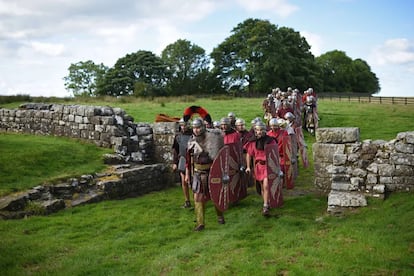
Marcus’s journey is full of such beautiful sights as to induce Stendhal’s syndrome, but it is also plagued by frequent inconveniences and dangers. What were some of the downsides of being an ancient Roman tourist? “There were all the annoyances we associate with travel today: delays, substandard accommodations, bad food, and bedbugs,” Toner says. “But by far the greatest dangers were shipwrecks and bandits. We have some ancient accounts that complain, as Marcus does, about what a terrible experience it was to be at sea in the middle of a storm. Banditry seems to have been a very common problem. Epictetus warns travelers not to venture out alone on a road, but to travel in company, with bodyguards if possible. Sparsely populated areas were clearly more dangerous, and civil wars would result in defeated or deserted soldiers turning to banditry to survive. Some travelers simply disappeared. Pliny the Younger describes how the nobles Robustus and Metilius Crispus vanished without a trace, although they may have been murdered by their own slaves.”
In the book, Marcus Sidonius suggests that, in addition to those unwanted travel-related inconveniences, ancient Romans also practiced something akin to adventure tourism, intentionally seeking out extreme experiences. “One example of this,” says Toner, “was the rapids of the upper Nile. Tourists would ask boatmen to take them down the river on rafts, and the braver ones could navigate the rapids on their own, much like today. One ancient traveler known for practicing this extreme sport was the Greek intellectual Aelius Aristides.” There was also a darker form of tourism, such as travelling to watch the traditional whippings inflicted on young boys during their initiations in Sparta. Curiously, Marcus speaks little of sex tourism, and other than the occasion when he is mistakenly put up in a brothel, reveals little of his erotic experiences along the way.
If we had travelled as a tourist in Marcus’s time, what would we make sure not to miss? Toner highlights a few must-sees, most of which have long ago disappeared, or have lost their original splendor. “For starters, there is the architecture: the marvelous theaters, arches, public baths, bridges and aqueducts, all evidence of a level of prosperity that had never been seen before. The empire’s more populous eastern cities rivaled Rome in their size and diversity, and had markets where one could find all sorts of exotic and luxurious goods, such as spices from India and silks from China. The great temples would have also been worth a visit. Shrines accumulated vast quantities of valuable objects, left by worshippers as offerings. So much has been lost that it’s hard to know where to begin. I would love to see the missing masterpieces of ancient art, like Phidias’s colossal chryselephantine [gold and ivory] statue of Zeus at Olympia, one of the seven wonders of the ancient world; and Myron’s bronze cow sculpture. And to have been part of the crowd at one of the great festivals. And to have heard the statue of the god Memnon, who was said to have greeted his mother, Aurora, every morning with a strange noise made from air passing through its crevices. You can still see the statue in Luxor, but Emperor Septimius Severus restored it and as a result the statue stopped speaking, which proved disastrous for local tourism.”
In Toner’s book, Marcus visits the Colossi of Memnon (in reality, both are statues of Pharaoh Amenhotep III), and is mesmerized by their singing. And like many Roman tourists of the time, he leaves some graffiti on one of the pharaoh’s legs. Among those who left their marks on the Colossi in real life is the emperor Hadrian himself, who once indulged in a luxury tour with his lover Antinous. Marcus also visits the tombs of the Pharaohs (in the Valley of the Kings there are over two thousand graffiti marks from classical antiquity) and takes some small bottles of water from the Nile as a souvenir, something that ancient tourists used to do as well, according to the Roman poet Juvenal.
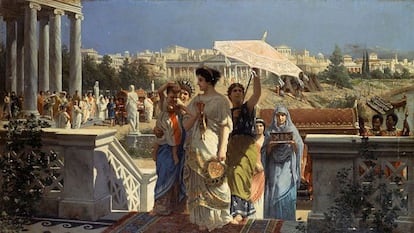
One has to wonder whether Roman tourists like Marcus had the capacity to understand the world in scientific terms, or if their experience was heavily mediated by their mythological thinking. “For the ancients, there was no distinction between the legendary and historical past,” Toner says. “Roman tourists were certainly not just interested in physical sights. The accounts they left of their travels contain long mythological digressions about each place, in addition to recounting the history, the logistics of their journey, and their meditations on all sorts of other matters. They were a kind of Baedeker to the ancient world,” he says, referencing the famous German guidebook publisher.
The name Marcus Sidonius Falx — the protagonist in the other two books that complete Toner’s trilogy: How to Manage Your Slaves (Profile Books, 2014) and Free Your Inner Roman (Profile Books, 2016) — evokes the name of another famous fictional Roman, the detective Marcus Didius Falco, the unforgettable character from Lindsey Davis’s mystery novels. Did Toner do this intentionally, in homage to Davis’s work? “I’ve read the novels, and I highly recommend them, but it wasn’t a conscious nod to the name. A falx was a small curved dagger with a blade inside, like a sickle, and I wanted a name that gave a sense of Rome’s rougher side. On the other hand, falx also suggests falsus, and Marcus is a fictional character.”
As a specialist in ancient Roman history and the author of a magnificent book on the amphitheater and the gladiators — The Day Commodus Killed a Rhino: Understanding the Roman Games (Johns Hopkins University Press, 2014) — what does Toner think about the upcoming release of a sequel to Ridley Scott’s Gladiator? “I loved the first movie. True, there were some historical inaccuracies, but that’s Hollywood, after all. I worry that the sequel will struggle to make the same impact, though, particularly given that we’ll be entering the messy and lesser-known period of the Severan Dynasty, but I’d love to be proven wrong!”
Sign up for our weekly newsletter to get more English-language news coverage from EL PAÍS USA Edition
Tu suscripción se está usando en otro dispositivo
¿Quieres añadir otro usuario a tu suscripción?
Si continúas leyendo en este dispositivo, no se podrá leer en el otro.
FlechaTu suscripción se está usando en otro dispositivo y solo puedes acceder a EL PAÍS desde un dispositivo a la vez.
Si quieres compartir tu cuenta, cambia tu suscripción a la modalidad Premium, así podrás añadir otro usuario. Cada uno accederá con su propia cuenta de email, lo que os permitirá personalizar vuestra experiencia en EL PAÍS.
¿Tienes una suscripción de empresa? Accede aquí para contratar más cuentas.
En el caso de no saber quién está usando tu cuenta, te recomendamos cambiar tu contraseña aquí.
Si decides continuar compartiendo tu cuenta, este mensaje se mostrará en tu dispositivo y en el de la otra persona que está usando tu cuenta de forma indefinida, afectando a tu experiencia de lectura. Puedes consultar aquí los términos y condiciones de la suscripción digital.
More information
Últimas noticias
Most viewed
- Reinhard Genzel, Nobel laureate in physics: ‘One-minute videos will never give you the truth’
- Oona Chaplin: ‘I told James Cameron that I was living in a treehouse and starting a permaculture project with a friend’
- Pablo Escobar’s hippos: A serious environmental problem, 40 years on
- Charles Dubouloz, mountaineering star, retires at 36 with a farewell tour inspired by Walter Bonatti
- Why we lost the habit of sleeping in two segments and how that changed our sense of time
